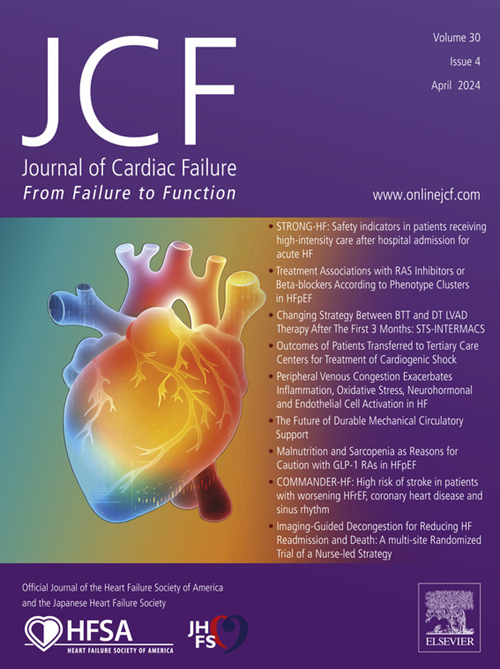Afterload Reduction After Non-invasive Low-level Tragus Stimulation In Acute Heart Failure
IF 6.7
2区 医学
Q1 CARDIAC & CARDIOVASCULAR SYSTEMS
引用次数: 0
Abstract
Introduction
While pulse pressure (PP) arises mainly from the combined influences of stroke volume and large arterial compliance, central blood pressure (BP) has been recognized as a major indicator of left ventricular (LV) afterload. Non-invasive transcutaneous vagus nerve stimulation has been reported to improve cardiac function in HF patients. In this study, we investigated the relationship between active low-level transcutaneous electrical stimulation (LLTS) and change of PP and central BP in patients with acute HF (AHF).
Methods
The 22 patients hospitalized for AHF after initial stabilization (median 80 yrs, males 60%) were randomly assigned to active or sham group, and LLTS (20Hz, 1mA) was delivered using an ear clip attached to the tragus (active group) or the earlobe (sham control group) for 1hour daily over 5 days. Brachial PP and central aortic systolic pressure (CASP) and heart rate (HR) were noninvasively measured before and after stimulation.
Results
Baseline characteristics were not significantly different between active (n=8) and sham (n=8) groups. In the active group, PP (73.7 vs 60.8mmHg), CASP (133 vs 119mmHg) and HR (79 vs 77bpm) were significantly decreased after stimulation (all p<0.05). Not PP, but the changes in CASP (-11.5 vs 8.37mmHg) and HR (-4.63 vs 2.73bpm) before and after stimulation were significantly different between active and sham groups (all p<0.001). No device-related side effects were observed.
Conclusion
In this study, the active LLTS resulted in an acute afterload reduction in the elderly AHF patients. Non-invasive LLTS may be useful and safe for reducing afterload rather than stroke volume or large aortic stiffness in AHF.
求助全文
约1分钟内获得全文
求助全文
来源期刊

Journal of Cardiac Failure
医学-心血管系统
CiteScore
7.80
自引率
8.30%
发文量
653
审稿时长
21 days
期刊介绍:
Journal of Cardiac Failure publishes original, peer-reviewed communications of scientific excellence and review articles on clinical research, basic human studies, animal studies, and bench research with potential clinical applications to heart failure - pathogenesis, etiology, epidemiology, pathophysiological mechanisms, assessment, prevention, and treatment.
 求助内容:
求助内容: 应助结果提醒方式:
应助结果提醒方式:


